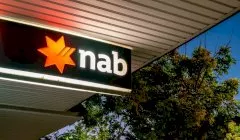Invest
Why retailers want customers to ‘tap and save’
Retailers are trying to save consumers hundreds of millions of dollars a year in hidden “tap and go” fees for card transactions, according to a recent submission.
Why retailers want customers to ‘tap and save’
Retailers are trying to save consumers hundreds of millions of dollars a year in hidden “tap and go” fees for card transactions, according to a recent submission.

On top of the price, consumers or merchants are unwittingly paying another fee due to their transaction going through expensive international payment networks.
“The fee gouging is harmful to businesses, and the banks should be doing much more to educate their customers, give them options and save money for everyone,” Council of Small Business Organisation Australia (COSBOA) CEO Peter Strong said.
While the retailers pay these fees up-front, the consumers are often the ones left with the bill as they either cop a surcharge at the point of payment or have higher retail prices with the merchant passing on costs.
In the countdown to the Reserve Bank of Australia’s Review of Retail Payments Regulation, four of Australia’s retail associations are pushing for lower fees through a system called least cost routing (LCR).

Least cost routing, or “tap and save” as its also referred to, is where merchants choose to route a debit card transaction to the lowest-cost network for that transaction.
Sometimes this might be the international networks, but more often it will be EFTPOS, the local Australian network, the submission noted.
The CEO of the Australian Convenience and Petroleum Marketers Association (ACAPMA), Mark McKenzie, said banks needed to be more transparent with their fee structures.
“Payments and fees are a complicated business, and many smaller retailers struggle to understand the true nature of the costs they’re expected to pay,” Mr McKenzie said.
In a recently released issues paper regarding its Review of Retail Payments Regulation, the Reserve Bank of Australia said: “For most merchants, payments by EFTPOS can be significantly cheaper for them to accept than payments via the international schemes.”
It also stated: “None of the major banks have taken advantage of the ability to implement LCR ‘in the background’ as a way to offer improved pricing for smaller and medium-sized merchants on simple merchant plans.”
About the author

About the author


Spending
Moneysmart study reveals Gen Z women more concerned about finances than men
A new research conducted by ASIC’s Moneysmart has unveiled the heightened levels of stress and concern regarding finances and the cost of living among Australian Gen Z women compared to their male ...Read more

Spending
The cost of politeness: Aussies out of pocket by $1,350 due to 'awkward tax'
It's the time of year when Australians dive into their pockets for festive events and gatherings, yet a recent study by PayPal suggests that many are too polite, or perhaps too embarrassed, to ask for ...Read more

Spending
Aussies can ‘NAB Now Pay Later’ with the last major bank to embrace BNPL
NAB has become the latest bank to enter the BNPL market. Read more

Spending
Aussie households spent $368 a week on transport after petrol price surge
Fuel costs have increased by 40 per cent over the past year, a new report from the Australian Automobile Association has revealed. Read more

Spending
Voters say reducing the cost of living should be the government’s top priority
Aussies have ranked high cost of living as the top issue that needs to be addressed by the next government. Read more

Spending
Bodies back Labor’s commitment to stronger BNPL regulation
All parties should commit to stronger regulations for the BNPL sector, according to Financial Counselling Australia. Read more

Spending
Household spending surges led by retail and recreation
Spending on retail, recreation and hospitality have continued to climb as COVID-19 case numbers and restrictions have eased. Read more

Spending
Banks extend financial assistance to flood-affected customers
A range of assistance is available from major banks to those impacted by flooding in NSW and Queensland. Read more

Spending
Moneysmart study reveals Gen Z women more concerned about finances than men
A new research conducted by ASIC’s Moneysmart has unveiled the heightened levels of stress and concern regarding finances and the cost of living among Australian Gen Z women compared to their male ...Read more

Spending
The cost of politeness: Aussies out of pocket by $1,350 due to 'awkward tax'
It's the time of year when Australians dive into their pockets for festive events and gatherings, yet a recent study by PayPal suggests that many are too polite, or perhaps too embarrassed, to ask for ...Read more

Spending
Aussies can ‘NAB Now Pay Later’ with the last major bank to embrace BNPL
NAB has become the latest bank to enter the BNPL market. Read more

Spending
Aussie households spent $368 a week on transport after petrol price surge
Fuel costs have increased by 40 per cent over the past year, a new report from the Australian Automobile Association has revealed. Read more

Spending
Voters say reducing the cost of living should be the government’s top priority
Aussies have ranked high cost of living as the top issue that needs to be addressed by the next government. Read more

Spending
Bodies back Labor’s commitment to stronger BNPL regulation
All parties should commit to stronger regulations for the BNPL sector, according to Financial Counselling Australia. Read more

Spending
Household spending surges led by retail and recreation
Spending on retail, recreation and hospitality have continued to climb as COVID-19 case numbers and restrictions have eased. Read more

Spending
Banks extend financial assistance to flood-affected customers
A range of assistance is available from major banks to those impacted by flooding in NSW and Queensland. Read more









